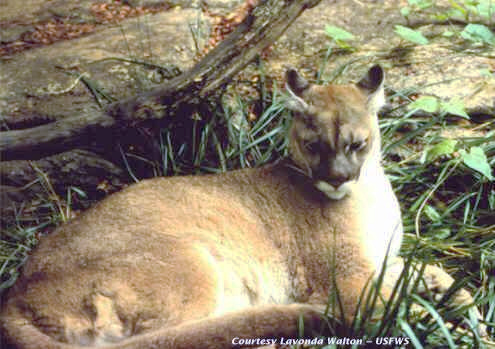
The Columbia Climate School originally published this story on October 12, 2022. Edits by EarthSky.
Why the Endangered Species Act keeps failing
Since its passage in 1973, the U.S. Endangered Species Act has been the strongest law to prevent species extinctions in the United States. The law has served as a model of conservation policy to other nations. But its success in helping species recover leaves a lot to be desired. Out of the thousands of species that have been listed by the Endangered Species Act in the past 48 years, only 54 have recovered to the point where they no longer need protection. A new study, published in the peer-reviewed journal PLOS ONE on October 12, 2022, examines why so few species have recovered successfully.
Erich Eberhard from Columbia University’s Department of Ecology, Evolution, and Environmental Biology led the study, and the co-authors are David Wilcove of Princeton University and Andrew Dobson of Princeton and the Santa Fe Institute. Their study paints a grim picture. They find that most species are not receiving protection until their populations are precariously small, dimming their prospects of recovery. They wrote:
We find that small population sizes at time of listing, coupled with delayed protection and insufficient funding, continue to undermine one of the world’s strongest laws for protecting biodiversity.
Accelerating rates of extinction
The findings are particularly newsworthy in light of the upcoming meeting of the United Nations Convention on Biological Diversity in December. The meeting aims to finalize a framework that will guide conservation efforts around the world through 2030. The planet currently faces accelerating rates of species extinction, with a projected loss of over 1 million species in the foreseeable future.
Small populations are more vulnerable to environmental and genetic threats. Thus, they’re more likely to go extinct before conservation interventions can recover the species to a stable population size.
In 1993, scientists first reported evidence of species not receiving protection under the Endangered Species Act until their populations were very small. That’s when a study found that species being listed for protection had, on average, just 1,075 remaining individuals for vertebrates, 999 remaining individuals for invertebrates and 120 for plants.
The new study repeats the 1993 study’s methodology to determine whether the U.S. Fish and Wildlife Service has become more proactive during the roughly 30 years since our attentions were first drawn to the problem. The team also looked at trends in species’ wait times. Wait times are the length of time between when a species is first identified as potentially needing protection and when it actually receives protected status under the Endangered Species Act. Additionally, the study looked at trends in funding for the listing and recovery of endangered species.
The study’s findings
As it turns out, species’ population sizes at time of listing did not significantly change between 1985-1991 and 1992-2020. The study also found that there are consistently long wait times before species receive protection. This further increases the risk of extinction to species with already small or rapidly declining populations.
Funding restrictions don’t help matters. Funding allocations declined between 2010 and 2020. At the same time, the number of species listed for protection increased by over 300%. As a result, the study found, funding for protection has dropped by nearly 50% per species since 1985. Eberhard said:
As the number of imperiled species – and the threats that they face – multiply, the unfortunate conclusion is that the U.S. Fish and Wildlife Service is being asked to do more with less resources.
Inadequate funding toward protecting threatened and endangered species has persisted for decades. This is regardless of which political parties are in power in the White House and Congress. The study said:
Increased funding is essential for sustained, substantial progress in protecting imperiled species. Studies have shown that government expenditures for imperiled species management do contribute to an improvement in recovery status and averted extinctions.
As the meeting of the Convention on Biological Diversity draws near, the study authors hope that leaders in the United States and across the world will learn from these lessons to better protect and conserve imperiled species across the globe.
Bottom line: The Endangered Species Act has failed to protect the flora and fauna on its list due to too slow action and too little funding.
Source: Too few, too late: U.S. Endangered Species Act undermined by inaction and inadequate funding











